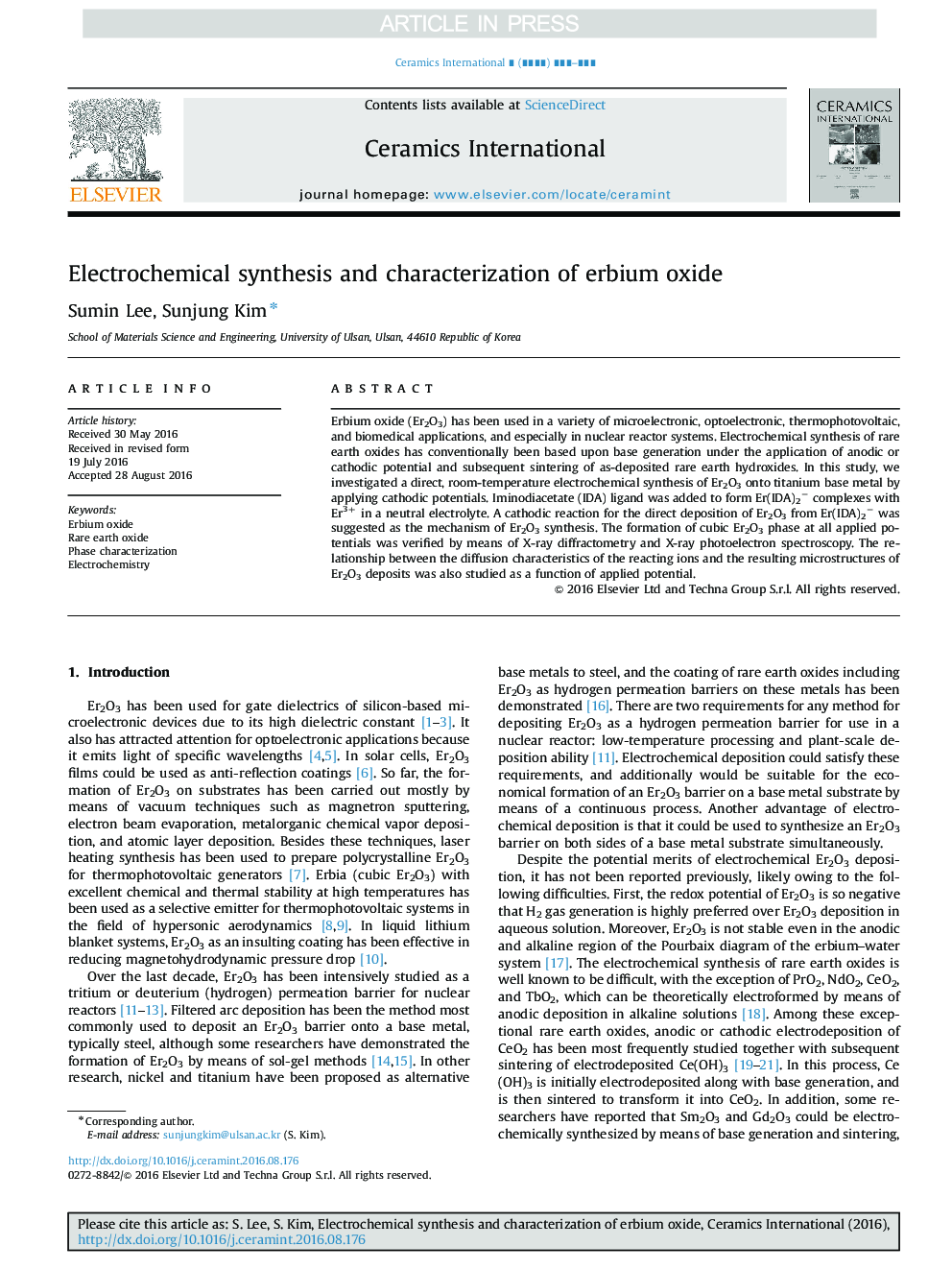| Article ID | Journal | Published Year | Pages | File Type |
|---|---|---|---|---|
| 5439314 | Ceramics International | 2016 | 6 Pages |
Abstract
Erbium oxide (Er2O3) has been used in a variety of microelectronic, optoelectronic, thermophotovoltaic, and biomedical applications, and especially in nuclear reactor systems. Electrochemical synthesis of rare earth oxides has conventionally been based upon base generation under the application of anodic or cathodic potential and subsequent sintering of as-deposited rare earth hydroxides. In this study, we investigated a direct, room-temperature electrochemical synthesis of Er2O3 onto titanium base metal by applying cathodic potentials. Iminodiacetate (IDA) ligand was added to form Er(IDA)2â complexes with Er3+ in a neutral electrolyte. A cathodic reaction for the direct deposition of Er2O3 from Er(IDA)2â was suggested as the mechanism of Er2O3 synthesis. The formation of cubic Er2O3 phase at all applied potentials was verified by means of X-ray diffractometry and X-ray photoelectron spectroscopy. The relationship between the diffusion characteristics of the reacting ions and the resulting microstructures of Er2O3 deposits was also studied as a function of applied potential.
Related Topics
Physical Sciences and Engineering
Materials Science
Ceramics and Composites
Authors
Sumin Lee, Sunjung Kim,
